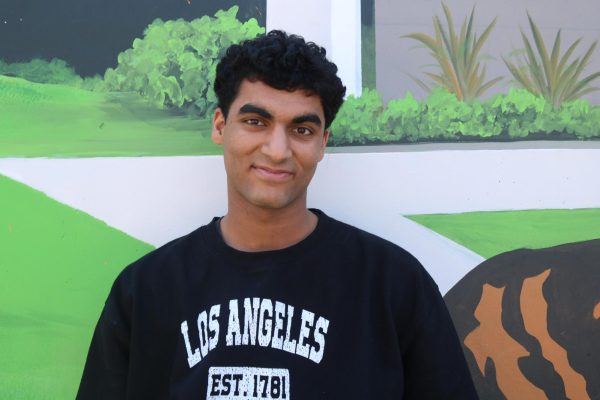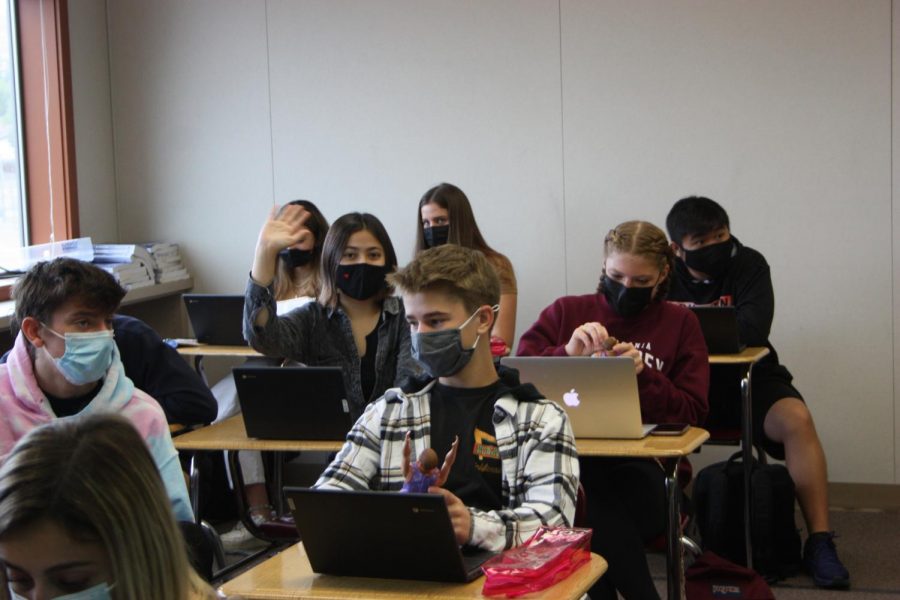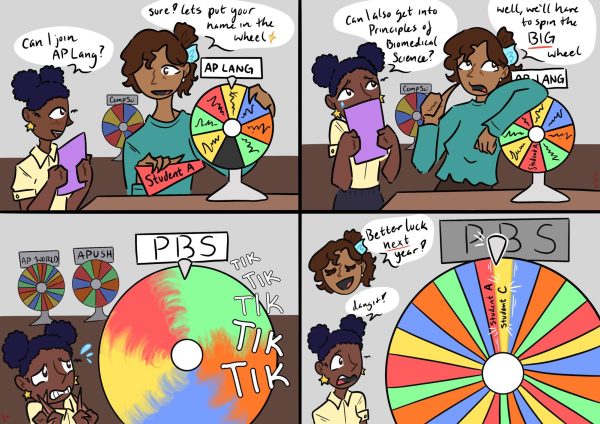In-person school maintains safety
Students in Mr. Allen’s class do work while wearing masks, which is a requirement of everyone on campus while they are indoors. Masks are reinforced in all classes as a precaution against COVID-19.
After spending all my freshman year online, and practically forgetting how it felt to be in an actual classroom, I was ready and excited to return back to in-person school.
But as much as I told myself that things would be “normal”, there was still a little hint of doubt whether in-person school would really be safe?
Now, after being back at campus for about two months, school appears to be safer than expected.
As the first day of school approached, I wasn’t so sure that the mask guidelines would be followed. I mean, come on, they expect us to wear masks every time that we are indoors?
But to my surprise, most of the teachers from day one were really strict about the mask guidelines, almost always instructing students to wear their masks properly. I also found that most classrooms have also had hand sanitizer, with some teachers requiring students to use some before starting class.
These are just some of the many ways the school and district are following to make school as safe as possible. In addition to mask mandates and asking students to socially distance, the district is also encouraging classrooms to have ventilation in the classroom by opening windows and doors to let in fresh air when appropriate. Some classrooms even have small air filters.
The district states it has addressed the issue of improving air filtration by “[upgrading] all HVAC air filters to MERV-13, which meets the guidance from the American Society of Heating Refrigerating and Air-Conditioning Engineers (ASHRAE) on how best to handle COVID-19.”
Despite all these efforts to keep students and staff safe, there is still a chance of some people on campus catching COVID-19. In order to limit the spread, the school is heavily emphasizing students to stay home if they show any symptoms of COVID.
If unvaccinated, students are required to get tested and quarantine. They can only return until after a negative COVID test and they have remained symptom-free for 24 hours.
Participation in on-campus activities such as after-school sports is also not permitted during an illness.
There are also ways the school is using to accurately track students to create a further layer of protection. If students need to leave a classroom, they have to scan a QR code to fill out a Google form providing their information and where they went.
Other than serving as a bathroom pass, this also allows the school to know who students might have been in contact with so they can be notified if there are any issues with exposure.
Given these measures the school and the district have taken, the number of cases specifically in Cal High has been low compared to other schools. As of Oct. 11, Cal has reported 23 positive cases of COVID-19 since Aug. 10.
The number of daily cases also has been significantly lower than when we were at the peak of the pandemic.
In California, we’re currently averaging around nearly 9,000 cases a day compared to the nearly 40,000 cases in January, according to the New York Times.
Despite this new “normal”, there hasn’t been much of a compromise of regular school activities such as athletic events and on campus rallies, which are being hosted outside in the hopes of achieving the feel of normalcy.
It will be very interesting to see how these rallies and school activities will be hosted as the school year progresses, and more such activities begin to resume.
But we can be rest assured that Cal will continue all abide by every policy to keep us safe.

Senior Abhinav Purohit is back for year three as the Social Media & Video Production Editor for The Californian. This year he hopes to strengthen the...


